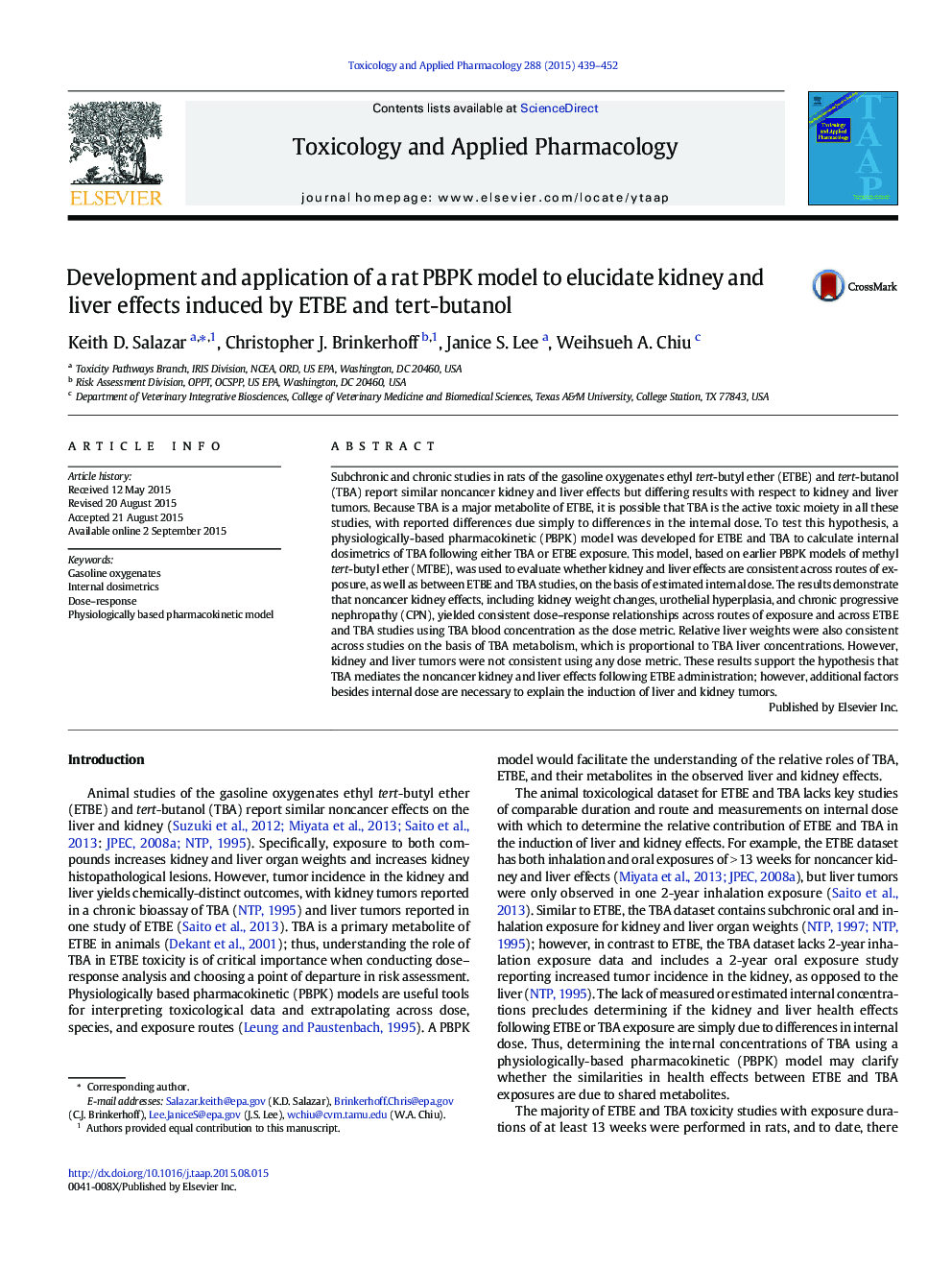| Article ID | Journal | Published Year | Pages | File Type |
|---|---|---|---|---|
| 2568327 | Toxicology and Applied Pharmacology | 2015 | 14 Pages |
•We model two metabolically-related fuel oxygenates to address toxicity data gaps.•Kidney and liver effects are compared on an internal dose basis.•Noncancer kidney effects are consistent using TBA blood concentration.•Liver weight changes are consistent using TBA metabolic rate.•Kidney and liver tumors are not consistent using any internal dose metric.
Subchronic and chronic studies in rats of the gasoline oxygenates ethyl tert-butyl ether (ETBE) and tert-butanol (TBA) report similar noncancer kidney and liver effects but differing results with respect to kidney and liver tumors. Because TBA is a major metabolite of ETBE, it is possible that TBA is the active toxic moiety in all these studies, with reported differences due simply to differences in the internal dose. To test this hypothesis, a physiologically-based pharmacokinetic (PBPK) model was developed for ETBE and TBA to calculate internal dosimetrics of TBA following either TBA or ETBE exposure. This model, based on earlier PBPK models of methyl tert-butyl ether (MTBE), was used to evaluate whether kidney and liver effects are consistent across routes of exposure, as well as between ETBE and TBA studies, on the basis of estimated internal dose. The results demonstrate that noncancer kidney effects, including kidney weight changes, urothelial hyperplasia, and chronic progressive nephropathy (CPN), yielded consistent dose–response relationships across routes of exposure and across ETBE and TBA studies using TBA blood concentration as the dose metric. Relative liver weights were also consistent across studies on the basis of TBA metabolism, which is proportional to TBA liver concentrations. However, kidney and liver tumors were not consistent using any dose metric. These results support the hypothesis that TBA mediates the noncancer kidney and liver effects following ETBE administration; however, additional factors besides internal dose are necessary to explain the induction of liver and kidney tumors.
